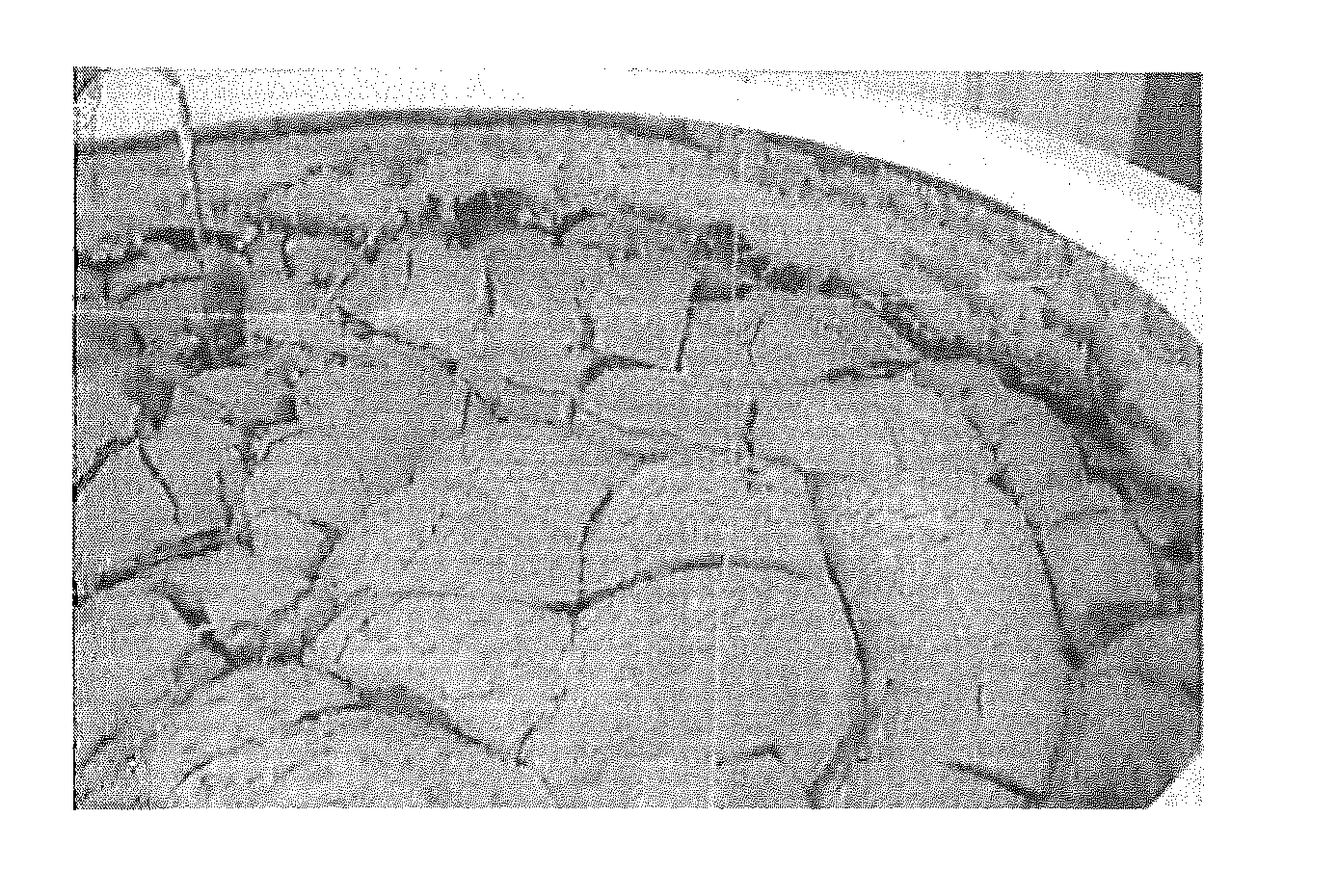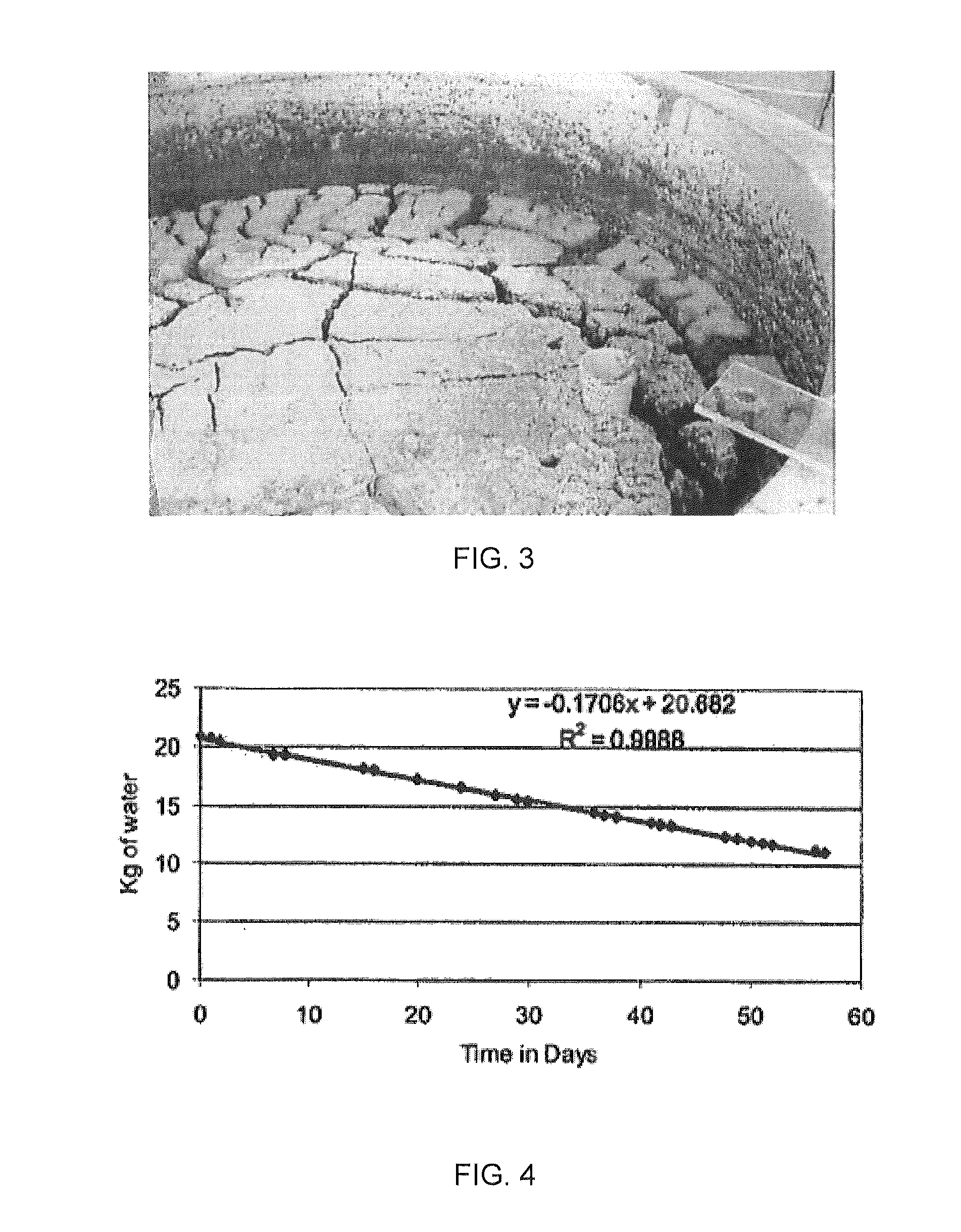Oil sands fluid fine tailings dewatering using rim ditching
a technology of oil sands tailings and rim ditching, which is applied in sustainable waste treatment, quary waste water treatment, lighting and heating equipment, etc. it can solve the problem of limiting the options of reclaiming tailings ponds, and achieve efficient management and accelerate consolidation and dewatering
- Summary
- Abstract
- Description
- Claims
- Application Information
AI Technical Summary
Benefits of technology
Problems solved by technology
Method used
Image
Examples
example 1
[0058]The effects of the addition of lime and gypsum to fluid fine tailings in a rim ditch process were assessed, with particular focus upon evaporative drying and comparing the drying rate with and without the addition of inorganic reagents. 100 kg test cells and two 14 m3 or 17,000 kg test cells were used. The two large cells were instrumented to measure pore pressure as a function of depth in the cell and selected samples were evaluated for water chemistry changes. The pore pressure dissipation with evaporation was monitored for over one year for the large cells and evaporation rate for about eight weeks for the smaller 100 kg cells.
[0059]Lime and gypsum were added to FFT samples and mixed for more than thirty minutes before being transferred into the 14 m3 test cells. The smaller 100 kg tests were thoroughly mixed using a large hand held mixer. Lime and gypsum additives were added on a weight of slurry basis. Where possible, water samples were collected to determine the water ch...
PUM
| Property | Measurement | Unit |
|---|---|---|
| particle diameter | aaaaa | aaaaa |
| height | aaaaa | aaaaa |
| surface area | aaaaa | aaaaa |
Abstract
Description
Claims
Application Information
 Login to View More
Login to View More - R&D
- Intellectual Property
- Life Sciences
- Materials
- Tech Scout
- Unparalleled Data Quality
- Higher Quality Content
- 60% Fewer Hallucinations
Browse by: Latest US Patents, China's latest patents, Technical Efficacy Thesaurus, Application Domain, Technology Topic, Popular Technical Reports.
© 2025 PatSnap. All rights reserved.Legal|Privacy policy|Modern Slavery Act Transparency Statement|Sitemap|About US| Contact US: help@patsnap.com



